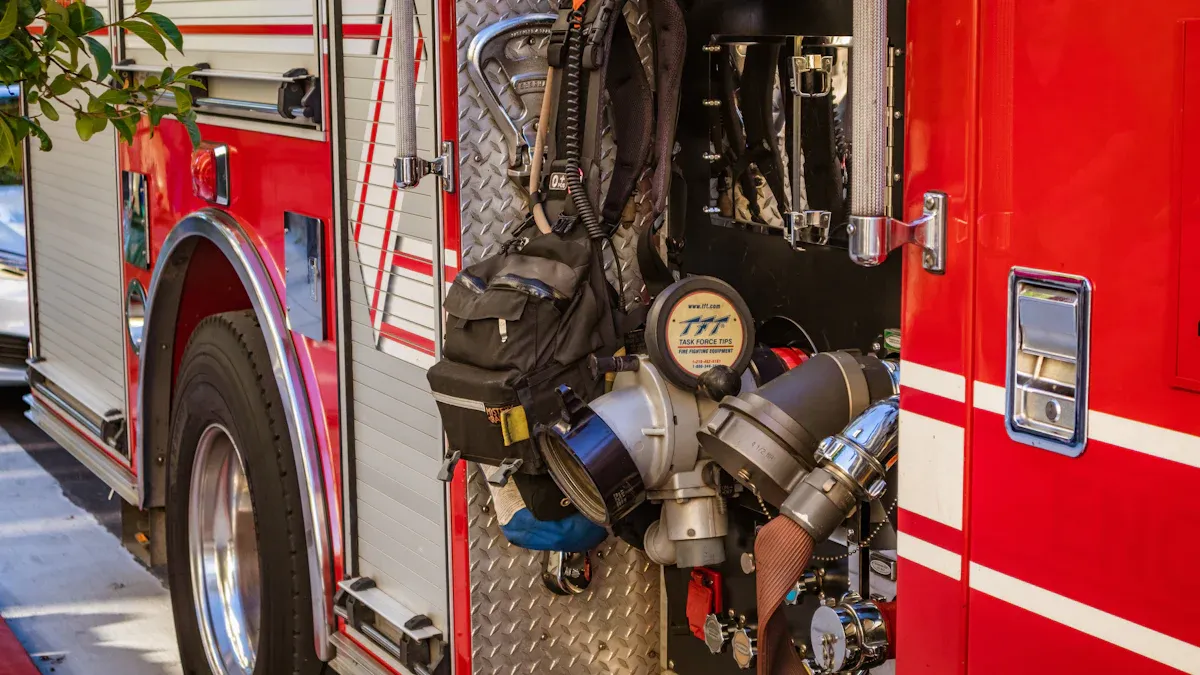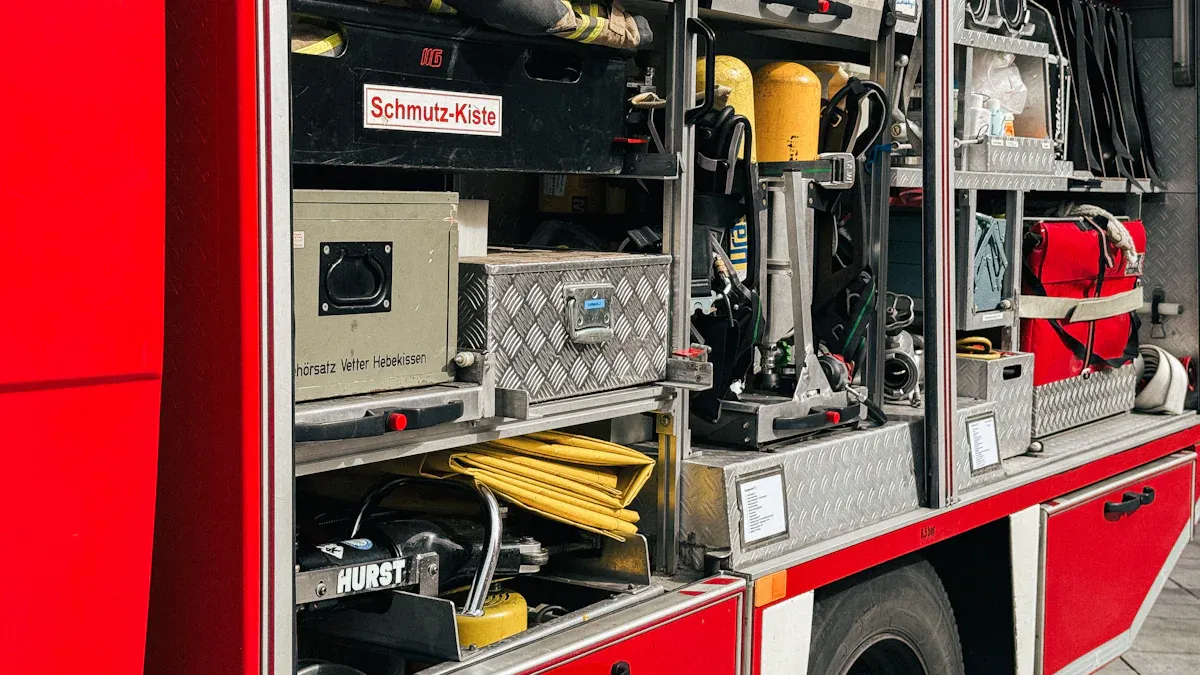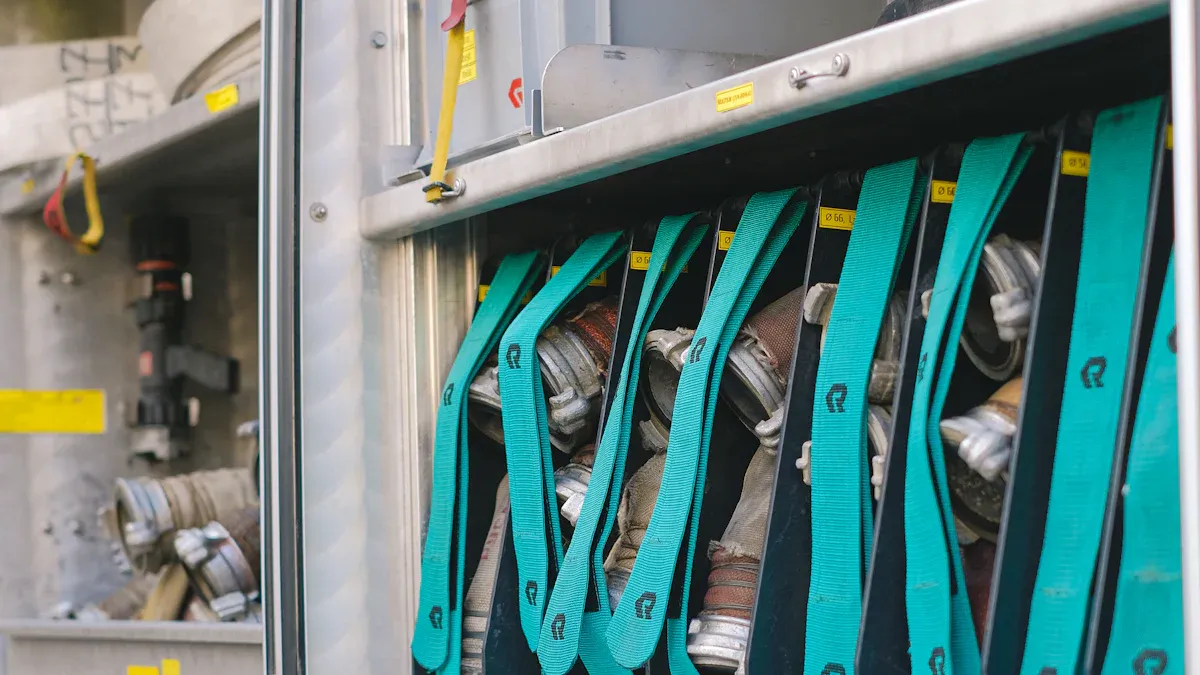How to Store Your Helius Flashlight and Helius Headlamp for Emergency Use

Your Helius flashlight and headlamp are vital tools during an emergency. Proper storage and care ensure they work when you need them most. Keep them in optimal condition by storing them correctly, maintaining their batteries, and testing them regularly. This preparation guarantees reliability and extends the lifespan of your devices.
Key Takeaways
Keep your Helius flashlight and headlamp in a cool, dry spot. This stops moisture damage and keeps them ready to use.
Test your devices every three months to make sure they work. Change the batteries if needed to stop leaks.
Arrange your emergency kit with labeled boxes. This helps you find your flashlight and headlamp fast in emergencies.
Why Proper Storage and Care Matter
Ensuring Reliability During Emergencies
Proper storage of your Helius flashlight and headlamp ensures they are ready when emergencies strike. Keeping these devices in a dry, accessible location prevents moisture damage and allows you to grab them quickly during a power outage or natural disaster. Regular cleaning of weatherproof seals also enhances their durability, enabling them to withstand harsh conditions. To prepare for prolonged emergencies, store spare batteries or chargers in a waterproof container. This ensures your light sources remain functional when you need them most.
Preventing Battery Leaks and Corrosion
Battery leaks can cause significant damage to your devices and pose safety risks. Leakage may burn your skin, contaminate soil, or ruin your flashlight and headlamp entirely. To prevent this, disconnect batteries when the devices are not in use. Regularly inspect the battery compartment for signs of corrosion. If you notice any damage, clean it immediately to avoid further harm. Proper battery maintenance safeguards your devices and ensures they remain reliable during disaster preparedness efforts.
Extending the Lifespan of Your Devices
Taking care of your Helius flashlight and headlamp extends their lifespan, saving you money and ensuring they are always ready for emergencies. Store them in a cool, dry place to protect them from extreme temperatures and humidity. Clean the exterior regularly to remove dirt and debris that could affect performance. Replace worn-out parts promptly to maintain optimal functionality. These simple steps preserve battery life and keep your light sources in excellent condition for years to come.
Ideal Storage Conditions for Your Helius Flashlight and Headlamp

Temperature and Humidity Considerations
Storing your Helius flashlight and headlamp in the right environment ensures their longevity and performance. Keep these devices in a location with low humidity to prevent corrosion and rust. High humidity can damage internal components and reduce the effectiveness of your light. Use silica gel packets in storage containers to absorb excess moisture and protect your devices.
Follow these tips for optimal storage:
Remove the battery and store it separately to avoid leaks.
Choose a space with humidity levels comfortable for human habitation.
Lubricate rubber parts to maintain their flexibility and prevent cracking.
Minimize exposure to air for rubber components to reduce wear.
These steps help maintain the safety and reliability of your emergency tools.
Choosing a Dry and Cool Location
A dry and cool location is ideal for storing your emergency devices. Moisture can lead to mold growth and material deterioration, while heat can damage internal components. A well-ventilated area protects your flashlight and headlamp from pests that might cause irreparable harm. Avoid placing them near windows or in basements prone to dampness. Keeping your light in a stable environment ensures it remains functional when you need it most.
Using Protective Storage Options (e.g., zip-lock bags)
Protective storage options add an extra layer of defense against environmental damage. Store your Helius flashlight and headlamp in zip-lock bags or airtight containers to shield them from dust and moisture. For added protection, include silica gel packets to absorb any residual humidity. These simple measures preserve battery life and keep your devices ready for emergencies. Proper storage ensures your light sources remain reliable and safe to use.
Battery Maintenance and Storage Tips
Disconnecting Batteries When Not in Use
Disconnecting the batteries from your Helius flashlight and headlamp when not in use is a simple yet effective way to maintain their functionality. This practice prevents residual current draw, which can drain the battery even if the device is turned off. It also eliminates the risk of accidental activation, ensuring the light does not turn on unintentionally during storage. Additionally, removing the battery reduces the chance of leakage, which could damage the device over time. By taking this precaution, you protect your emergency tools and extend their battery life.
Storing Rechargeable and Disposable Batteries Safely
Proper storage of rechargeable and disposable batteries is essential for safety and disaster preparedness. Follow these best practices:
Never recharge disposable batteries, as they are not designed for it and may react dangerously.
Monitor batteries for swelling or overheating during charging to avoid hazards.
Store batteries in a cool, dry place, away from heat or open flames.
Protect battery terminals to prevent accidental circuits that could cause fires.
Dispose of used batteries at designated collection sites instead of throwing them in the trash.
These steps ensure your batteries remain safe and ready for use when you need them most.
Replacing Batteries Regularly to Prevent Leakage
Replacing batteries at the right time is crucial to prevent leakage and maintain the reliability of your devices. Follow these guidelines:
Remove dead batteries immediately, as their shells are prone to breach.
Check the expiration date on live batteries, as chemical reactions occur even if they still function.
Take out batteries from devices not in use for extended periods to avoid potential damage.
By replacing batteries regularly, you safeguard your Helius flashlight and headlamp, ensuring they are ready to provide light during emergencies.
Regular Testing and Maintenance
How Often to Test Your Helius Flashlight and Headlamp
Testing your Helius flashlight and headlamp regularly ensures they remain functional during emergencies. Aim to test them at least once every three months. Turn on the light to check its brightness and confirm the battery is working. If the light appears dim, replace the battery immediately to maintain optimal performance. For rechargeable models, ensure the battery holds a charge by testing it after recharging. Regular testing helps you avoid surprises during disaster preparedness efforts.
Cleaning and Inspecting for Corrosion or Wear
Keeping your flashlight and headlamp clean prevents wear and extends their lifespan. Follow these steps to inspect and clean them effectively:
Remove the battery to avoid accidental activation.
Wipe the exterior with a soft, lint-free cloth. Use a damp cloth for stubborn dirt.
Clean the threads and apply a thin layer of silicon-based lubricant to ensure smooth operation.
Use a microfiber cloth or lens cleaning solution to clean the lens for maximum light output.
Inspect the battery compartment for corrosion. If you notice any, clean it with a cotton swab dipped in vinegar or lemon juice.
These steps protect your devices from damage and ensure they are ready for emergencies.
Replacing Worn-Out Parts or Batteries
Replacing worn-out parts or batteries promptly is essential for safety and reliability. Check the rubber seals and replace them if they appear cracked or brittle. Inspect the lens for scratches that could reduce light output. Replace the battery when the brightness decreases significantly or if it shows signs of swelling. Always use high-quality batteries to maximize battery life and maintain the performance of your Helius flashlight and headlamp. Regular maintenance keeps your devices dependable during emergencies.
Quick Access During Emergencies

Strategic Placement Around Your Home
Strategically placing your Helius flashlight and weatherproof headlamps around your home ensures you can access them quickly during emergencies. Reliable light sources are essential during power outages, providing illumination and guidance in dark spaces. Weatherproof headlamps offer hands-free lighting, allowing you to multitask effectively. Their durability ensures they withstand rough conditions, making them invaluable during disaster preparedness.
Consider placing these devices in key areas such as bedrooms, the kitchen, and near exits. This setup enhances safety by ensuring you can navigate your home during a crisis. A well-thought-out lighting plan also provides peace of mind, knowing you are prepared for unexpected situations.
Organizing an Emergency Kit
An organized emergency kit is vital for emergency preparedness. Include essentials such as non-perishable food, water, first aid supplies, medications, and a multi-tool. Add flashlights, weatherproof headlamps, and high-quality batteries to ensure you have a reliable light source. Solar-powered lighting solutions are also excellent additions, offering sustainable illumination during power outages.
When selecting flashlights, prioritize durability, water resistance, adjustable brightness, and long battery life. These features ensure your devices perform well under challenging conditions. Regularly check your kit to confirm all items are functional and ready for use.
Labeling and Preparing for Fast Retrieval
Labeling and organizing your emergency devices improve retrieval speed during critical moments. Use the Task-Based Package-Organized (TPO) approach to group items needed for specific tasks together. This method reduces the time spent searching through multiple storage bags. For example, store your flashlight, headlamp, and batteries in one labeled container. A well-structured system ensures you can access your tools quickly, enhancing safety and efficiency during emergencies.
Proper storage and care of your Helius flashlight and headlamp ensure they remain reliable during emergencies. By following these tips, you gain long-term benefits:
Access items quickly during emergencies.
Prevent damage to essential tools.
Foster community resilience through preparedness.
Take action today to enhance your emergency preparedness.
FAQ
How do I ensure my Helius flashlight remains weatherproof during storage?
Store your flashlight in a dry, cool place. Use protective storage like zip-lock bags to maintain its weatherproof features. Regularly inspect seals for cracks or wear.
Can I improve the weatherproofing and water resistance of my headlamp?
Yes! Clean the rubber seals and apply silicone lubricant to maintain flexibility. Avoid storing your headlamp in humid areas to preserve its weatherproofing and water resistance.
What should I do if my weatherproof flashlight stops working?
Check the battery compartment for corrosion. Replace the batteries if needed. Inspect the lens and seals for damage. If issues persist, contact Helius customer support.
See Also
Top Reasons to Select Helius Flashlight for Everyday Carry
Helius Tactical Flashlight: Brightening Your Outdoor Experiences
Explore the Helius Lantern Flashlight with 200-Hour Battery Life
